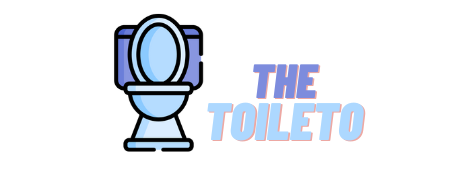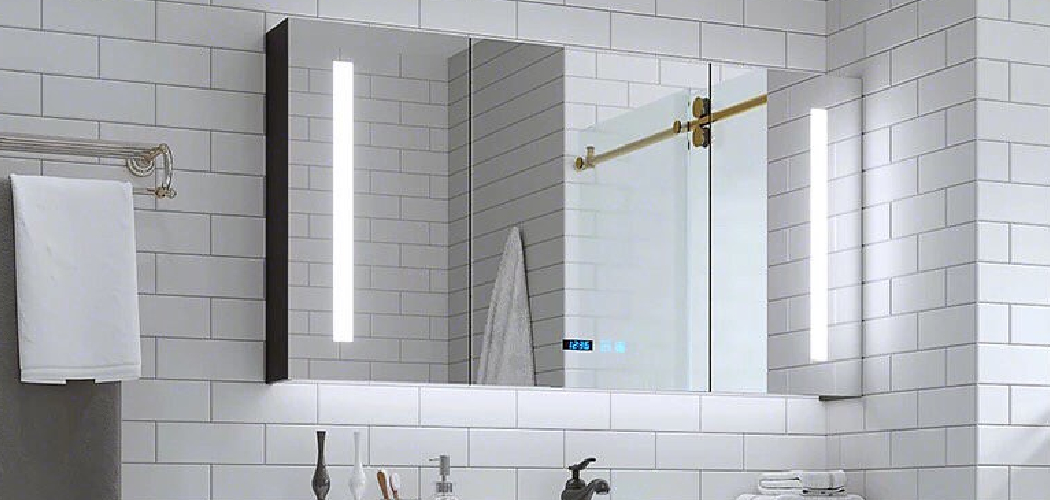Updating a bathroom mirror is an effective and budget-friendly way to enhance the overall aesthetic of your bathroom. Whether you’re looking to replace an outdated fixture, add a decorative touch, or improve functionality, refreshing your mirror can make a noticeable difference in the space.
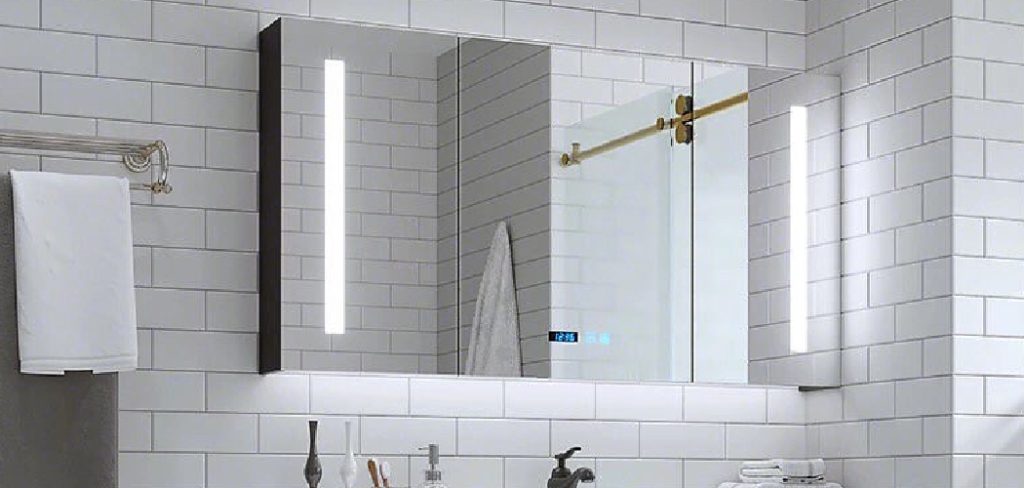
This guide on how to update bathroom mirror will walk you through the process, offering practical tips and creative ideas to help you achieve the perfect look for your bathroom.
Why Update Your Bathroom Mirror?
Before jumping into the details of updating your bathroom mirror, you may be wondering why it’s worth the effort. Here are a few reasons to consider:
Aesthetics:
As mentioned earlier, updating your bathroom mirror can significantly improve the overall look and feel of your bathroom. With so many styles, shapes, and sizes available, you can easily find a mirror that complements your existing decor or adds a unique touch. Plus, a new mirror can make the space appear larger and brighter, giving your bathroom a fresh and updated look.
Functionality:
Another important reason to update your bathroom mirror is for its functionality. If you currently have a basic, builder-grade mirror, it may not be meeting all of your needs. Upgrading to a mirror with built-in storage or lighting can greatly improve the functionality of your bathroom. You can also choose a fog-proof or magnifying mirror for added convenience.
Energy Efficiency:
If you’re concerned about energy efficiency in your home, updating your bathroom mirror could help. Switching to an LED-lit mirror can save energy and reduce electricity costs in the long run.
Increase Resale Value:
Believe it or not, bathroom mirrors can affect the resale value of your home. A well-chosen and attractive mirror can add to the overall aesthetic appeal of your bathroom and make a good impression on potential buyers.
Customization:
Another advantage of upgrading your bathroom mirror is the ability to customize it according to your personal preferences. From frame design and color to shape and size, you can choose a mirror that perfectly fits your style and complements the rest of your bathroom decor.
Needed Materials
Measuring Tape:
Before purchasing a new bathroom mirror, it is important to accurately measure the space where you want to hang it. This will ensure that you get the right size and avoid any issues with installation.
Mounting Hardware:
Most bathroom mirrors come with mounting hardware, such as screws and anchors, but some may require additional materials. It is always helpful to have a variety of tools on hand, including a drill, level, and hammer.
Optional Additions:
If you want to upgrade your bathroom mirror to the next level, there are various optional additions that can enhance its functionality. These include built-in lighting, anti-fog features, and even Bluetooth connectivity for playing music or taking phone calls while getting ready. These optional additions may come at an extra cost, but they can greatly improve your bathroom experience.
7 Step-by-step Guides on How to Update Bathroom Mirror
Step 1: Measure the Space
- Use a measuring tape to determine the dimensions of your bathroom mirror space.
- Measure both the width and height, as well as any additional specifications like electrical outlets or light fixtures that may affect placement.
- Write down these measurements so you can refer to them later when selecting a new mirror.
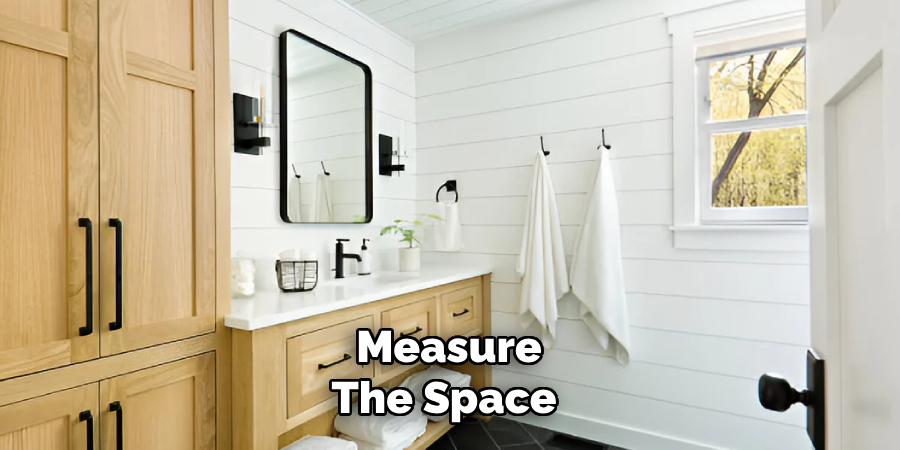
Step 2: Choose Your Mirror
- Consider the style and design of your bathroom when choosing a new mirror.
- There are various shapes and sizes available, from traditional rectangular mirrors to round or oval ones.
- Take into account the size of your space and how much of a statement you want the mirror to make in your decor.
Step 3: Prepare Your Work Area
- Lay out some protective sheets or towels on the floor to avoid any damage during the installation process.
- Make sure you have all necessary materials and tools handy before beginning.
- Clear out any clutter or objects from the area surrounding your bathroom mirror.
- Have a step stool or ladder, if needed, to reach higher areas.
- Consider wearing protective equipment such as gloves and safety glasses when handling tools and materials.
Step 4: Remove Old Mirror (if applicable)
- If you are replacing an old mirror, carefully remove it from the wall using a putty knife or scraper.
- Be sure to wear protective gloves and eyewear to avoid any accidents.
- Dispose of the old mirror in a safe and appropriate manner.
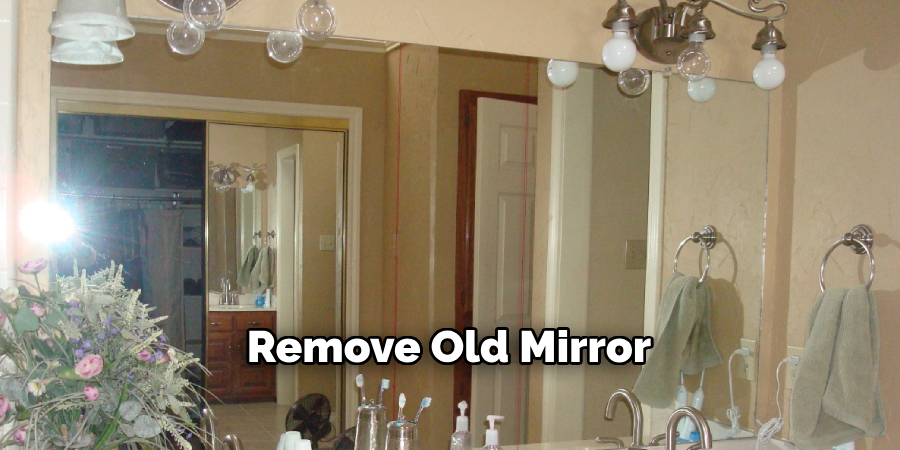
Step 5: Measure and Mark Placement
- Use a measuring tape to determine the desired placement of your new mirror on the wall.
- Make small marks with a pencil where the top corners of the mirror will be positioned.
- Use a level to double-check that your marks are straight and even.
Step 6: Install Hanging Hardware
- Depending on the type of mirror you have, you may need to install hanging hardware before mounting it on the wall.
- Follow the manufacturer’s instructions for the proper installation of any necessary brackets or clips.
- Make sure the hanging hardware is securely attached to the back of the mirror.
Step 7: Mount Mirror on Wall
- Carefully lift the mirror and line up the top corners with the marks made on the wall.
- Double-check that the placement is correct before proceeding.
- Use a level to ensure that the mirror is straight, adjusting as needed.
- Once satisfied with the positioning, use a drill or screwdriver to secure any necessary hardware.
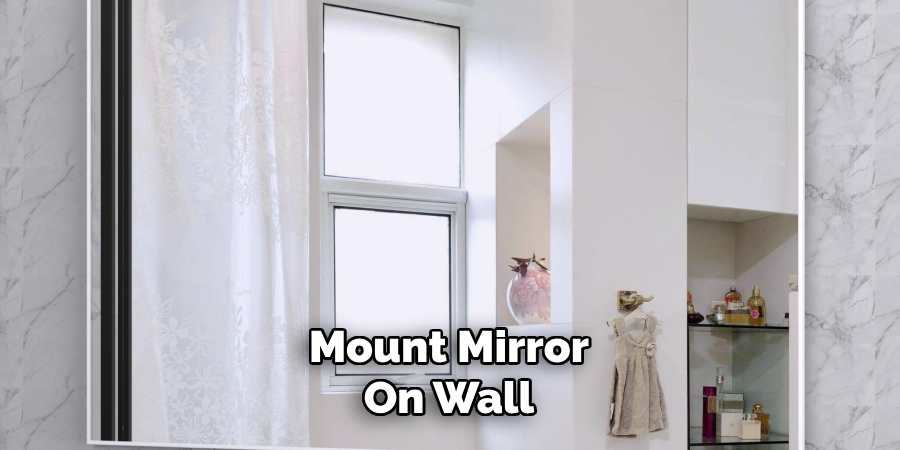
Following these steps on how to update bathroom mirror will ensure that your mirror is safely and securely mounted on the wall. It’s important to regularly check and tighten any screws or hardware to maintain stability.
Additionally, consider using adhesive strips or mounting tape as an extra precaution for heavier mirrors. Always follow the manufacturer’s instructions and weight limits when using these types of products.
Additional Tips
- If you are hanging a heavy mirror, it is recommended to have someone assist you in holding it up while you mount it on the wall.
- Always make sure to use appropriate tools and hardware for your specific mirror and wall type. Consult a professional if unsure.
- For added safety, consider using adhesive strips or brackets to further secure your mirror onto the wall.
- If your mirror has a frame, make sure to properly secure the frame onto the mirror itself before hanging it on the wall.
- Take extra caution when handling and mounting large or oddly shaped mirrors. It may be helpful to mark the desired placement on the wall beforehand.
- Regularly check and tighten any screws or brackets used to secure your mirrors to prevent accidents or damage over time.
- Consider adding felt pads behind your mirror at its mounting points to protect both the mirror and wall from scratches.
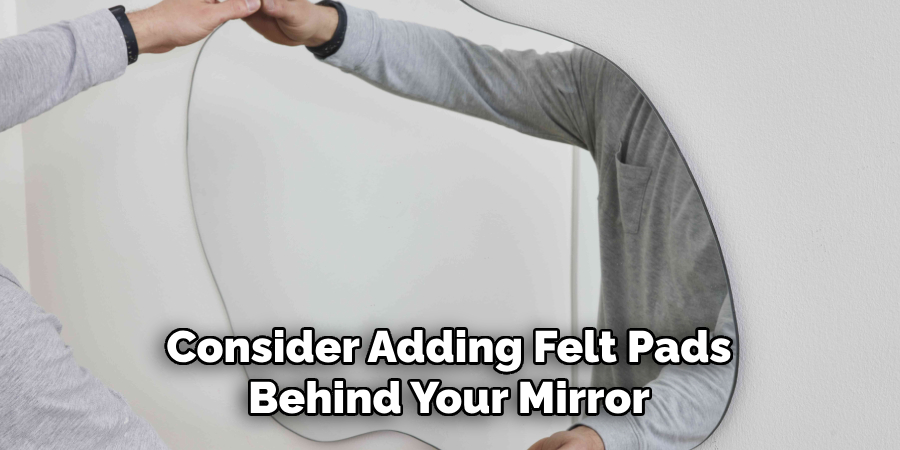
- When drilling into walls, always be mindful of any electrical wires or pipes that may be hidden within. Use a stud finder if necessary.
- For added design and safety, consider using multiple mirrors in a space to create a visually appealing focal point and provide different viewpoints.
- Mirrors can also be used strategically to enhance natural light in a room by reflecting it from windows or other sources.
Frequently Asked Questions
Q: Can I Hang a Heavy Mirror on Drywall?
A: It is not recommended to hang a heavy mirror on drywall alone. Drywall is not typically strong enough to support the weight of a heavy mirror. Instead, it is recommended to use a wall anchor or toggle bolt specifically designed for hanging heavy objects on drywall.
Q: How Do I Properly Hang a Mirror?
A: The best way to hang a mirror depends on its size and weight. For smaller mirrors, picture-hanging hooks or adhesive strips may be sufficient. For larger and heavier mirrors, it is recommended to use more secure methods such as screws and anchors or specialized brackets designed for hanging mirrors.
Q: Can I Hang a Mirror with Only One Hook?
A: It is not recommended to hang a mirror with only one hook, as this can increase the risk of it falling and breaking. It is best to evenly distribute the weight of the mirror by using at least two hooks or brackets, spaced apart according to the manufacturer’s instructions.
Q: What Type of Wall is Best for Hanging a Mirror?
A: Mirrors can be hung on various types of walls, including drywall, plaster, and masonry. However, it is important to choose the appropriate hanging hardware based on the type of wall and the weight of the mirror. For example, heavy mirrors should be hung on studs behind drywall or with specialized anchors for masonry walls.
Conclusion
Hanging a mirror can greatly enhance the aesthetic appeal and functionality of a space, but it is essential to do so safely and correctly. By assessing the weight of the mirror, understanding your wall type, and using the appropriate tools and hardware, you can ensure a secure and attractive installation.
Always follow the manufacturer’s guidelines on how to update bathroom mirror and, when in doubt, seek professional assistance to avoid potential damage to your wall or mirror. With proper planning and execution, your mirror can become a centerpiece that adds light and depth to any room.
